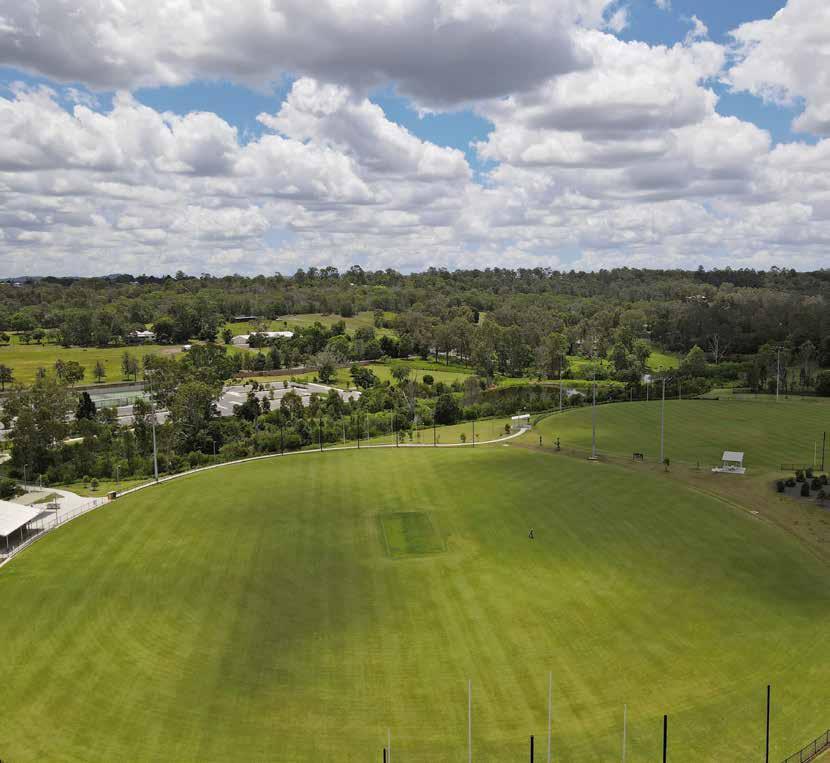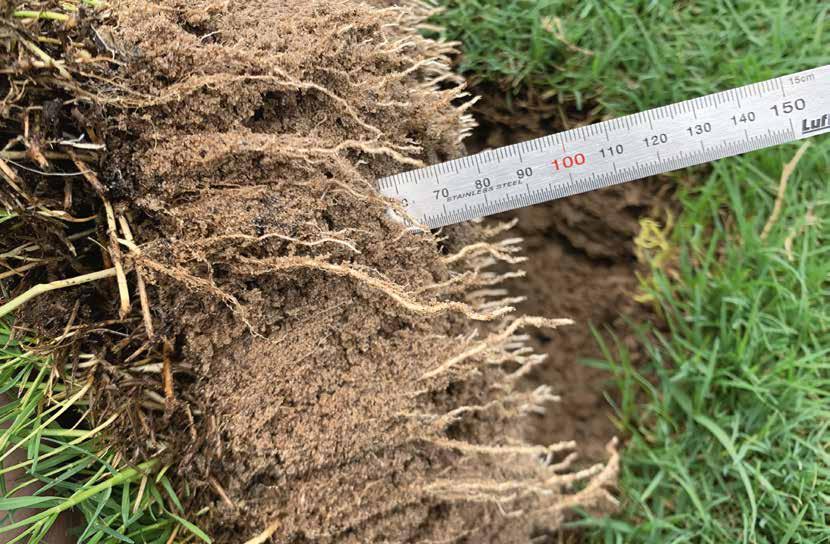
4 minute read
AUSTRALIAN SPORT TURF CONSULTANTS
Ensuring Successful Sports Turf Specifications
Words By Matt Roche, Director Australian Sports Turf Consultants (ASTC)
Advertisement
Whether it be a community sports field or elite playing surface, the expectations of our natural turf sports fields have never been higher. Helping to achieve a superior surface starts at the design phase and writing definitive sports turf technical specifications.
Australian Sports Turf Consultants (ASTC) has been engaged by stadium venues, Councils, and community sporting clubs to provide design and sports field technical specifications for the construction or redevelopment of sports fields. In recent years, the demand has significantly increased with access to sport and recreation grants and Councils’ desire to repurpose tired sporting fields and maximize the use of existing sports fields and parkland.
Over the last decade ASTC has come across some interesting sports field “specifications” where the requirements for the subgrade, growing medium, turfing and consolidation have been written on a maximum 1 to 2 pages. This is fraught with danger as it not only leaves the methodology up to interpretation but can leave a very grey area when things do not go to plan. It is important to determine the clients’ expectations early on to ensure that a sports field is appropriately constructed and is fit-for-purpose. ASTC specializes in writing specifications for the subgrade, subsoil drainage, growing medium, turfing and consolidation. ASTC calls upon their nominated independent irrigation consultants to assist with irrigation designs and specifications. These days a number of Council’s are also requesting that a 12-month sports turf maintenance program be developed and included with the construction of new sporting fields. This is to ensure a high standard is maintained after the conclusion of the 8- to 12-week consolidation period post turfing.
It is important that Witness Points and Hold Points be clearly listed within the sports field technical specifications. This also
BCC Moggill District Sports Complex
includes pre-commencement testing to be undertaken before any materials are to be delivered to site. This is to ensure that the materials being delivered meet the specifications and design intent.
A key component for a successful sports field build is the quality of turfgrass, not just the variety. Whether it be a newer variety like TifTuf Hybrid Bermuda or an older variety like ‘Wintergreen Couch’, it is important that the quality of the turfgrass to be supplied for a project be high. Eight (8) key parameters for turfgrass selection and supply include:
• That the turfgrass is to contain only the chosen genus, species and variety name specified for the project. • The turfgrass is to be supplied by a single turf farm and must be sourced from a single block/paddock and be of
‘uniform’ appearance, age and quality. • The turf farm soil is preferably to have either a sand, loamy sand, sandy loam or sandy clay loam soil, or a turf washing option may be required. • The turf must not have visible signs of disease or insect stress, contain weeds or undesirable grasses. • The turf colour must be above acceptable (recommended rating of above 8 using Turf Colour Meter with the factory default Grass Index set) with discretion provided for seasonal variation only. • The turfgrass is to be sprayed with a turf registered insecticide to control lawn grub and African Black Beetle prior to harvest. Written evidence is to be provided by the turf farm. • The turfgrass is to be harvested, [washed if applicable], transported, picked up, handled and or mechanically maneuvered into position without damage; and • Broken, torn, uneven ends or turfgrass with undesirable large holes will not be acceptable.
To assist with obtaining the high quality turfgrass, ASTC believes in independent turf farm inspections being conducted. This includes routine annual inspections for Plant Breeder’s Rights (PBR) protected grasses and Turf Farm Suitability and Turf Farm Pre-Harvest inspections for sports field projects. This is to ensure the turfgrass is fit-for-purpose and meets that specified. A program such as AusGAP is also designed to monitor turf quality and aid clients,

“

QSAC in Brisbane

“
specifiers and consultants to deliver a high turf standard which contributes to a project being delivered on time. ASTC also undertakes third-party independent turf farm inspections for AusGAP.
Towards the end of a consolidation (grow in) period ASTC also carries out a sports field audit, similar to what they would do for a multi-use stadium or community sports field. The aim is to assess and report on the turf health and quality and to provide recommendations to increase turf and playing performance. It also provides a timely opportunity to check on the small things, such as valve boxes, sprinkler heads, fencing, goal posts etc., to allow a smoother handover of a field to the client at the end of the establishment period.
Sports field auditing is something we recommend to all our clients and we encourage them to undertake annual benchmarking of their sports fields new or old. This provides them with the opportunity to track the performance of their asset and for ASTC to work alongside the ground manager or contractor to action the appropriate recommendations to get the best out of the playing surface.
If you would like further information on sports field designs, technical specifications or auditing, please visit www.astcs.com.au or contact Matt Roche on mroche@astcs.com.au










